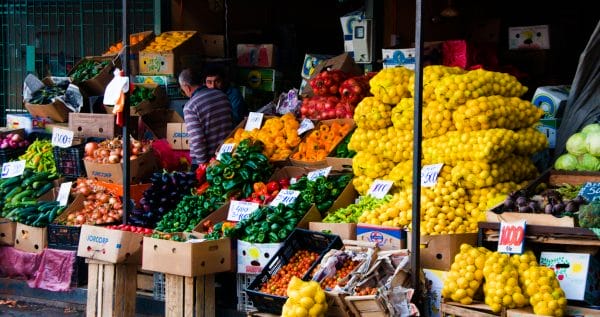“It’s very hard for me to save, because I have so many day-to-day expenses for my small kiosk. Still, at the beginning of the month I manually transfer part of my commission to my savings account, that way I don’t use it for other purposes during the month. It would be great if this transfer would be made automatically, every month.”
– Andrés, 45-year-old shop owner in Santiago Centro, Chile
We spoke with Andrés as part of our work to improve savings in Chile, and what he expressed was a very common feeling among the dozens of people we interviewed. Most informal sector workers want to save for their futures, but even those with access to banking products find it challenging—this is true around the world. One reason saving is hard is that most financial tools are not designed for the ways people act and make decisions in real life—made clear by Andrés’s desire for the ability to automatically save some of the monthly commission he receives.
That’s why, with support from the MetLife Foundation and as part of our ongoing collaboration with CajaVecina, a correspondent bank for the Chilean public bank BancoEstado, we’re developing a new tool to make saving easier, starting with CajaVecina’s own operators. There are 22,700 people who provide banking services for CajaVecina in small shops across communities throughout the country. They are also some of the bank’s most frequent customers.
Our behavioral diagnosis revealed that, like other CajaVecina users, operators have a general intention to save but often fail to do so. One reason for this is that they don’t have heuristics, or simple rules of thumb, for when, how, and how much to save. Additionally, when money is labeled for “savings,” people are less likely to dip into it, even if there are no restrictions on access. While this is a useful feature of savings accounts, it can, paradoxically, make it harder to set aside the money initially. CajaVecina operators may hesitate to allocate money to savings because of that separation.
We created a rule of thumb for operators: save a portion of your monthly commission from CajaVecina. We prompted them to choose a fixed amount that varied between $35 and $80 depending on their average commission, and this suggested amount represented 25% of their commission. Also, we made the transfer automatic so they don’t have to make the decision to save each month or risk forgetting the ongoing manual deposits. This is all part of a program they only have to enroll in once to set up the recurring transfer. By taking a single action operators can save every month.
We chose this approach because research shows that automatic recurring transfers are remarkably effective at increasing savings for retirement or for other uses. Most literature is based in “opt-out” mechanisms, through which consumers are automatically enrolled in a product or service beneficial for them unless they actively choose to opt out.
But opt-out approaches aren’t always feasible, as they were not with CajaVecina. In this case, an effective solution was to offer an “opt-in” mechanism. Of course, for the program to be effective, we need to inspire operators to sign up. Here too behavioral insights can help. We’re embedding behavioral insights into the enrollment process and into the communications about the program. For example, we are:
- Advertising the program to operators through the Point of Service (POS) machines they use to make transactions and view their transaction history and commissions, which helps reinforce the connection between CajaVecina and saving.
- Prompting operators to think about their long-term goals and how saving money now can help them become a reality.
- Enrolling operators through a simple process over the phone, eliminating as many hassles as possible and creating a clear moment for immediate action.
We know that Andrés will be glad to have automatic transfers of his commission at his disposal. To see how others engage with the program, we conducted two pilot tests with small groups of operators in the Santiago metro area, with promising early results. To determine the impact on savings for all CajaVecina operators, we are currently conducting a randomized evaluation of the program across Chile. Stay tuned for the results of this evaluation, which will help determine the impact of interventions like these and produce findings that support the financial health of thousands of CajaVecina operators throughout Chile.



